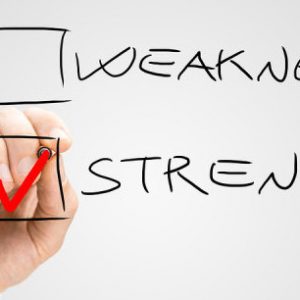
Thinking Styles: What Color Is Your Hat?
Typically, we handle problems in a tried and true way that we’re comfortable with. We don’t even think we have a thinking style because it’s

Typically, we handle problems in a tried and true way that we’re comfortable with. We don’t even think we have a thinking style because it’s

As a manager, do you use your intuitive thinking? Intuitive people aren’t afraid to use gut-feelings, but they’re keenly aware of the pitfalls. Self-checking and

The ability to ask creative questions has sparked innumerable inventions. Questions asked in the right way leads to breakthrough thinking and disruptive innovations, such as

The tools for making any behavioral change aren’t complicated, but they do have to include a system for follow-up if you want to make change

I’ve been writing about the value of knowing your strengths at work so you can get more out of your career. If you haven’t taken

If you want success at work, you’ll need to focus on playing to your strengths at work. But how do you know what they are?

Do you work for a negative manager? Does your boss want to fix everyone? A focus on negativity can breed disengagement. I’m still mulling over

Most of us have a poor sense of our talents and strengths yet are acutely aware of our weaknesses and flaws. Why is that? I’ll

Organizations usually fail at selecting the right people with management talent. A report by Amy Adkins in the Gallup Business Journal (April 13, 2015) suggests

I’ve been inspired by Harvard Professor Max Bazerman’s book The Power of Noticing: What the Best Leaders See (Simon & Schuster, 2014). It’s really caused

Join Nancy as she talks with Meredith Hirsh, her client, on her podcast, Working Healthcare. Learn when to seek a therapist versus a coach and

Listening may be the most difficult skill to master when communicating effectively. But master it, we can! The non-verbal part of communicating is the most

How do you test your leadership insights? “Innovation is seeing what everybody has seen and thinking what nobody has thought.” ~ Dr. Albert, Szent-

An organization’s health is only as sound as its leader’s decisions. Some companies prosper from wise leadership directions, while others struggle after flawed choices—choices that







